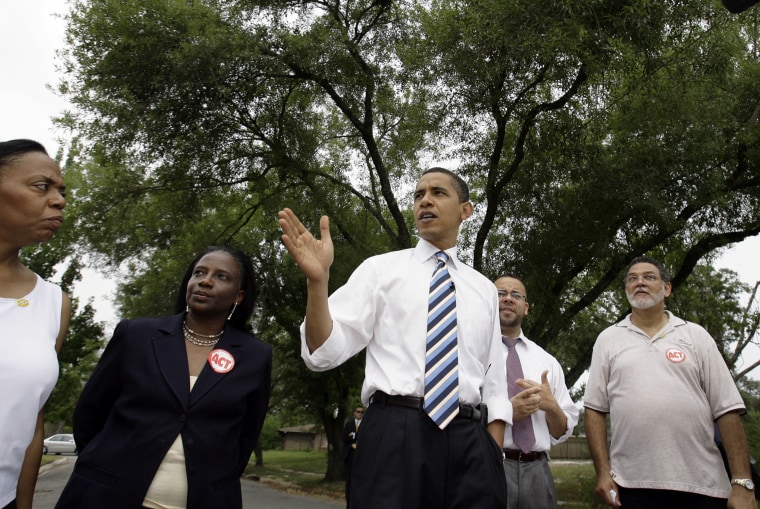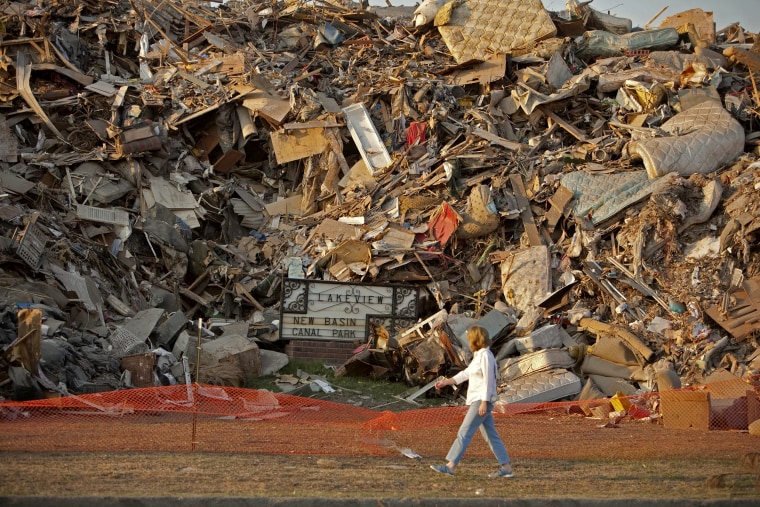In the aftermath of the massive devastation Hurricane Katrina left in its wake and problem-plagued emergency response efforts, presidents and government officials from both parties promised that things would be different going forward.
The Obama administration has since scored high marks in helping New Orleans recover, but also gets a “needs improvement” in many important areas.
“America failed the people of New Orleans and the Gulf Coast long before that failure showed up on our television sets,” Barack Obama, then a senator and presidential hopeful said two years after the storm ravaged the region “America failed them again during Katrina. We cannot — we must not — fail for a third time.”

He promised assistance to help rebuild the local economy, schools, homes, hospitals and roads, restore the wetlands and improve access to public transportation.
And for the most part, according to disaster response and public policy experts, Obama has kept many of those promises — aided in part by funding efforts that began under his predecessor, former president George W. Bush. The two administrations focused nearly $71 billion in federal funds to help the region rebuild and boost the economy.
However, when Obama visits New Orleans on Thursday to help commemorate the 10th anniversary of Hurricane Katrina, he will also return to a city that — despite great strides in rebuilding — has struggled to ensure some of its poorest residents have equitable access to housing assistance funds, public transportation and health care, public policy experts say.
“I’d probably give them a B, but the thing is, they haven’t taken the exam yet,” said Thomas Birkland, a political science professor and expert on federal disaster policy. “The exam would be a near Katrina scale disaster.”
Related: Will New Orleans' $14.5 Billion Walls Stand Up to the Next Big Storm?
Hurricane Katrina marked a watershed moment in federal disaster response — one that future President Obama and his administration used as a blueprint on how not to respond to massive disasters and how to better help communities recover.

One of the biggest lessons learned from Katrina is that local, state and federal officials must work hand-in-hand from “day one” on disaster preparation, response and recovery, said Brent Colburn, the former director of external affairs for FEMA and a former chief of staff at the Department of Housing and Urban Development in the Obama administration.
“Before, there was this idea that if a city was overwhelmed, a state stepped in. If a state was overwhelmed, the feds stepped in. We’re leaning forward in a way we didn’t pre-Katrina,” Colburn said. “It was a wake up call that (the federal government) needed to be a more active partner in all three pieces.”
Katrina was also the first major disaster to strike the United States after FEMA was made part of the Department of Homeland Security. In that transition, the agency sustained a number of cuts in terms of its overall budget and capacity.
Related: Where Is Disgraced Former FEMA Chief Michael Brown Now?
All of that had an impact, said Michael Brown, the former FEMA chief during the Bush administration. Brown came under fire for his agency’s handling of Katrina and ultimately resigned.
“I think one of the positives that came out of Katrina was we had witnessed with the creation of the Department of Homeland Security this shift from an all-hazards approach to disasters to ‘everything is terrorism.’ There was a shift of grant money, there was a shift of funding, a shift of focus, from all-hazards to terrorism, and that necessarily weakened the state and local response to disasters that occur almost every single day,” Brown said.
“The focus on terrorism made people forget Mother Nature does things all the time and if we start getting the mindset that we have to spend grant money only to response to terrorism, that starts to weaken state and local governments. They woke up to that after Katrina.”
They also “woke up” to the fact that helping communities recover from massive disasters would have to include a long-term effort by the federal government working with civic groups, the non and for profit sector, as well as local and state officials.
In Washington, it meant passing laws aimed at approving flood insurance provisions and improving federal response and assistance, among other measures.
On the ground in New Orleans and along the Gulf Coast, that meant such things as helping cut through red tape to help the region get recovery dollars more quickly and deploying more inspectors to conduct environmental impact studies to get building projects approved more quickly, Colburn said. It also included an increased emphasis on public education when it comes to disaster preparation and response.
Related: 'The old FEMA is gone': Craig Fugate's cleaned-up FEMA
“You saw Gov. Chris Christie getting out and pushing public to heed warnings,” Colburn said of the New Jersey Republican's urging to residents to take shelter before Hurricane Sandy. “President Obama urged people to listen to public officials. You didn’t see that pre-Katrina.”
Still, work remains.
“We’ve gotten much better at the response piece and the preparedness piece,” Colburn said. "We need to get much better at the recovery piece. It may have been 10 years ago for the country but for the people in Louisiana they are still feeling it.”
New Orleans was a city of “haves and have nots” struggling under the weight of economic disparity long before receding flood waters revealed stark differences in the neighborhoods that were most impacted.
New Orleans, post-Katrina, “is not the city it was,” due to tremendous strides in economic recovery, but also because some of the city’s poorest residents no longer live there, said Joseph Trainor, a public policy professor at the University of Delaware’s Disaster Research Center.
Poor people “have been redistributed to other areas of the region,” Trainor said.
A decade after Katrina, more than half of the city’s 72 neighborhoods saw a return of more than 90 percent of the pre-Katrina population, according to the nonprofit, Data Center, which focuses on economic and demographic information for South Louisiana.
However, there are not only 100,000 fewer African Americans in the city after Katrina, but there are also now more poor black households making less than $21,000 a year, according to figures from the Data Center.
Homeowners who remained or returned to the city have tapped into the $9.7 billion federal Road Home Assistance program to help them rebuild after Katrina. However, renters and those looking for Section 8 public assistance have faced high rent rates, a shortage of rental housing and long wait list for public housing.
Addressing housing needs has been a challenge for local, state and federal officials as they work to ensure funds are used properly and make it to the people who need it most.
“I think it’s a work in progress,” said Judith Rodin, the president of the Rockefeller Foundation, which has been deeply invested in the recovery here in New Orleans for the past ten years. “We still see a lot of patchiness in how housing is being built and access to affordable housing.”
And then there is the expensive work of helping New Orleans rebuild from Katrina in a way that prepares it for the next storm that will inevitably happen, public policy and disaster management experts said.
“Maybe crisis is the new normal and if it is we can no longer simply focus on recovery and relief,” Rodin said. “It is too expensive for the US to spend billions and billions of dollars…there has to be a greater focus on planning.”
